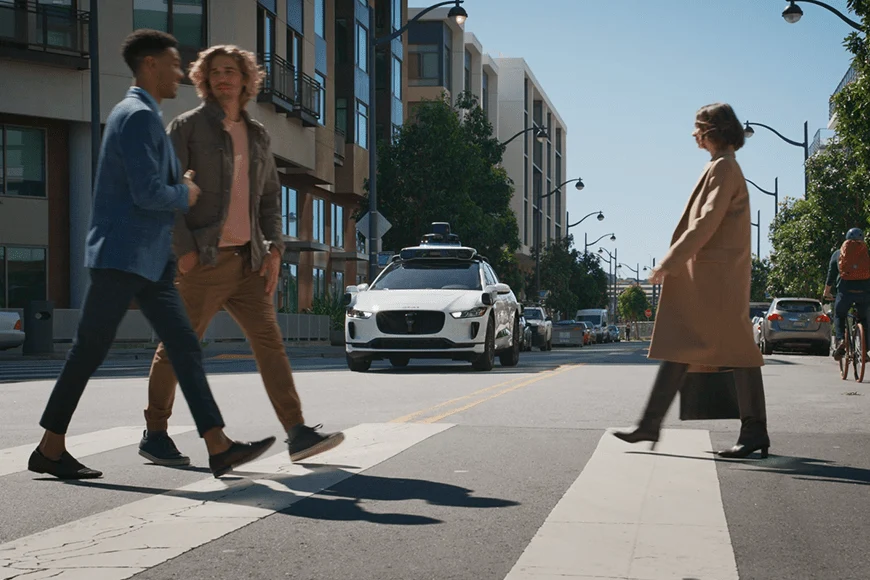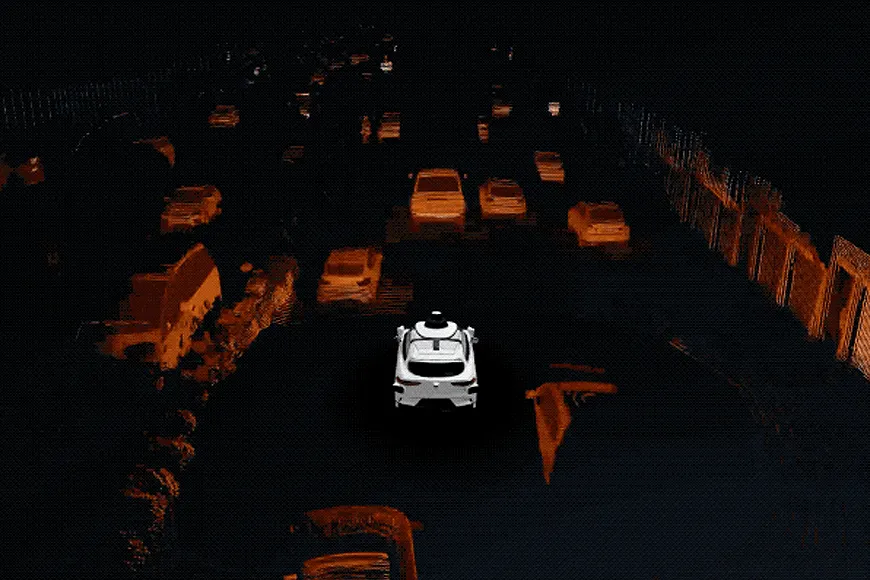With the rapid development of autonomous driving technology, the United States is entering a critical phase of commercialization and regulatory alignment. For individuals with low vision, the adoption of autonomous driving represents not only a technological advancement but also a transformative shift in mobility. This article analyzes the current state of autonomous driving in the U.S., focusing on technological progress, commercialization, regulatory policies, and future trends, while forecasting potential developments for 2025.
This autonomous vehicle concept is illustrated by Waymo (2025).
The Current State and Key Achievements of Autonomous Driving Technology
Autonomous driving technology has made significant progress in recent years, with some areas beginning to implement commercial testing and operations. However, full deployment remains a work in progress.
Waymo’s Leadership
- Waymo is a global pioneer in autonomous driving. Its driverless taxi service has achieved operational success in Phoenix and San Francisco. As of 2024, Waymo’s vehicles have accumulated over 20 million miles of testing, with fully autonomous services expanded to broader urban areas (Waymo, 2024).
- User feedback highlights convenience and safety, but further expansion is needed to address broader market demands.


(Waymo, 2024.)
Cruise’s Urban Operations
- Cruise has launched nighttime driverless shuttle services in San Francisco, covering key commercial and residential areas. It plans to expand to cities such as Austin and Houston by 2025.
- Cruise’s performance in complex urban environments demonstrates adaptability, although stability in extreme weather conditions remains a challenge.
Rapid Developments in Logistics
- Autonomous truck technology has become a focal point in logistics. Companies like Aurora and TuSimple are advancing long-haul freight automation, completing millions of miles of testing (Aurora, 2024). The commercial potential of these technologies is substantial, offering opportunities for cost reduction and efficiency gains.
Tesla’s Full Self-Driving (FSD) Advantages
- Tesla’s Full Self-Driving software has improved its ability to handle urban driving and highway scenarios. The latest FSD Beta version shows significant enhancements in recognizing and responding to complex road conditions, though human monitoring is still required (Tesla, 2024).
- Tesla has introduced pilot services in major cities and collaborates with local governments to explore more application scenarios.
Commercialization Potential and Current Developments
Despite technological breakthroughs, the full commercialization of autonomous driving faces multifaceted challenges.
Taxi Services
- Driverless taxis have been introduced in select cities, but operations are mainly confined to designated test areas. Market research estimates the autonomous taxi market will grow to $12 billion by 2025, driven by technological advances and optimized operational models (Statista, 2024).
Logistics and Freight
- Autonomous trucks are performing well on highways, and companies like Aurora and Waymo are collaborating with major logistics firms to explore large-scale deployment.
Solutions for Low Vision Users
- Many autonomous vehicles now include accessibility features such as voice navigation, Braille touchscreens, and audio cues, providing enhanced mobility options for low-vision users. These innovations enhance the societal value of autonomous driving.
Key Regulatory Advances
Technological advancements require corresponding regulatory support. The U.S. is accelerating legislative efforts for autonomous driving.
AV-STEP Legislation
- This act establishes technical standards and responsibility frameworks for Level 4 and Level 5 autonomous driving, clarifying the legal obligations of manufacturers and operators (NHTSA, 2024).
Privacy Protection and Data Security
- Several states have enacted laws to protect user data collected by autonomous vehicles, ensuring that consumer information is safeguarded.
Liability Allocation Mechanism
- The National Highway Traffic Safety Administration (NHTSA) has introduced a shared responsibility model to clarify accident liability among manufacturers, software developers, and users.
A Boon for Low Vision Individuals and Societal Impact
Autonomous driving technology has profound implications for individuals with low vision. Key applications include:
Enhanced Independence
- Autonomous vehicles empower low-vision individuals to participate more freely in social activities, creating new opportunities for employment and convenience in daily life.
Increased Inclusivity
- Custom features like voice navigation and Braille-enabled interfaces make autonomous services safer and more efficient for low-vision users.
Challenges and Future Development Trends
Despite progress, several challenges must be addressed before autonomous driving achieves full deployment:
Technical Limitations
- Adverse weather and complex road conditions remain significant hurdles. Solutions include developing higher-performance sensors and advanced algorithms.
Public Trust Issues
- Concerns about safety persist, requiring companies to build public confidence through transparent data sharing and user education.
Infrastructure Needs
- The deployment of V2X communication equipment and the digital transformation of road infrastructure are essential for large-scale adoption.
Outlook for 2025
Based on current trends, the following developments are expected by 2025:
Expanded Coverage
- Level 4 autonomous vehicles will achieve large-scale operations in major U.S. cities.
Reduced Costs
- With mass production and technological optimization, the cost of autonomous vehicles is projected to decrease by 30%-40%.
Increased Benefits for Low Vision Communities
- Customized services will further improve, offering higher-quality mobility solutions for low-vision users.
Conclusion
The realization of full-scale autonomous driving in the U.S. by 2025 will depend on technological readiness, regulatory support, and market acceptance. Nevertheless, it is clear that autonomous driving will bring significant convenience and efficiency to a wide range of users, including those with low vision.
Whether for low vision or normal vision, eyes deserve protection. For more practical articles about low-vision living, visit https://zoomax.com/category/low-vision-information/
References
Aurora. (2024). Automated freight systems in logistics. Retrieved from https://aurora.tech
Cruise. (2024). Night driving and city expansion plans. Retrieved from https://getcruise.com
NHTSA. (2024). AV-STEP draft and responsibility frameworks. Retrieved from https://nhtsa.gov
Privacy International. (2024). Privacy protection in autonomous vehicles. Retrieved from https://privacyinternational.org
Statista. (2024). Market size of autonomous taxi services. Retrieved from https://statista.com
Tesla. (2024). Full self-driving beta updates. Retrieved from https://tesla.com
Waymo. (2024). Milestone achievements in autonomous driving. Retrieved from https://waymo.com

